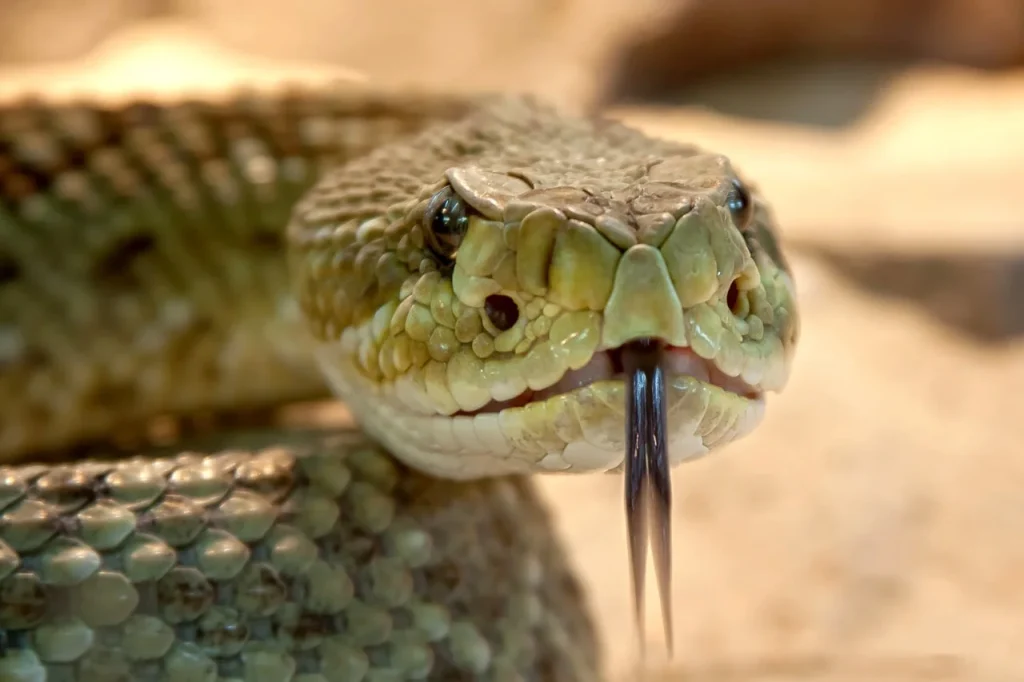Rattlesnake Myths
Now that you know the facts, let’s dive into some common myths. It’s time to separate truth from fiction.
- Rattlesnakes Always Rattle Before Striking
They don’t always give a warning before they strike. They rattle to deter predators, but if they feel immediately threatened or are caught off-guard, they might strike without rattling first. - Rattlesnakes Can Jump to Attack
They can’t jump. They can launch a strike from a coiled position, reaching up to a third of their body length, but they always remain in contact with the ground. - Baby Rattlesnakes Are More Dangerous Than Adults
While baby rattlesnakes are born with venom, they can’t control the amount they inject, often leading to dry bites. Adults have more potent venom and better control over venom expulsion. - All Rattlesnake Bites Are Fatal
Not all rattlesnake bites are fatal. Immediate medical treatment significantly increases survival rates, and many bites result in mild envenomation that can be effectively treated. - Sucking Out Venom Can Treat a Rattlesnake Bite
Trying to suck out venom from a rattlesnake bite isn’t just ineffective, it can also increase tissue damage and infection risk. The best response is to keep calm, immobilize the affected area, and seek medical help immediately.




2 Comments
Very informative. So many things I did not know. Thank you
Very interesting info! I have to point out something though! You mention early in the article that these snakes can launch up to two thirds of their body length in a strike. But in the myths section you say they can launch up to one third of their body length. I suppose it depends on the specific breed that determines that maybe?